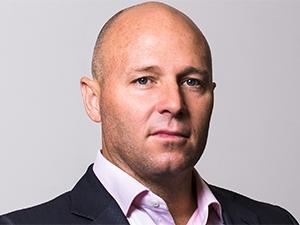Johannesburg, 06 Dec 2017

Asked to predict challenges and opportunities that the IT sector will face in 2018, Veeam's Regional Vice President for MEA, Gregg Petersen, says the single biggest challenge that businesses will face in 2018 will be having to do more with less.
"Budgets are going to be tightened even further, yet the IT department will be under pressure to deliver more and meet more stringent service level agreements.
"This trend towards decreased budgets will continue as the rand comes under increasing pressure, and will have a particularly negative impact on vendors who are dollar-based - which is pretty much the majority of vendors in this region," says Petersen.
However, there is an upside to this, in that it presents vendors with an opportunity to leverage solutions that are able to deliver more benefits with less, and that will empower the IT department - in turn - to open up new opportunities for the business.
An example of how businesses can get more value out of what they already have without spending more money, is by using their backup data for test and development purposes, to trial new solutions before releasing them to the business, over and above the normal practice of using it for file recovery in the event of corruption or a ransomware attack.
Petersen explains: "Backup data is no longer dead data that's just sitting there; companies want to be able to use their dormant infrastructure to provide a business value-add. The IT department should be looking for new opportunities such as those presented by modern technology to improve their deliverables on service level agreements at the same cost - if not less."
However, modern technology in itself poses challenges in that there's just so much available and possible - consider the fast-paced growth of the Internet of Things and applications in general - that businesses need to prioritise their projects for 2018 or face being overwhelmed by what's possible and lose sight of what's practical, adds Petersen.
The C-suite is becoming ever more tech savvy and understands what IT can deliver in terms of business value, and comes up with projects and initiatives that will drive revenue, placing increasing pressure on IT to deliver on business drivers instead of purely technology deliverables. As IT and business move closer together, business people become increasingly aware of what IT can deliver and start demanding more from the IT department. IT needs to prioritise its projects to align with these demands from the business, but at the same time, is expected to 'keep the lights on' for the business. Prioritising time and budget will prove challenging for IT.
However, says Petersen, the opportunity here lies in IT moving away from being a cost centre and actually being on the receiving end of budget from other departments within the business. "Previously, IT just spent its own budget. Now it has a huge opportunity to access funding for projects from elsewhere within the business. This will allow IT to offload some of its operations to external managed services providers via the cloud, freeing it up to focus on activities that will drive business value and revenue."
In South Africa, particularly, there's an abundance of managed service and cloud providers that can manage the day-to-day IT requirements of a business. The only proviso that Petersen makes is that the business choose a technology that allows it to migrate between local and international cloud providers, should they need or choose to. "Customers shouldn't feel that they're locked into one cloud provider," he concludes.
Share